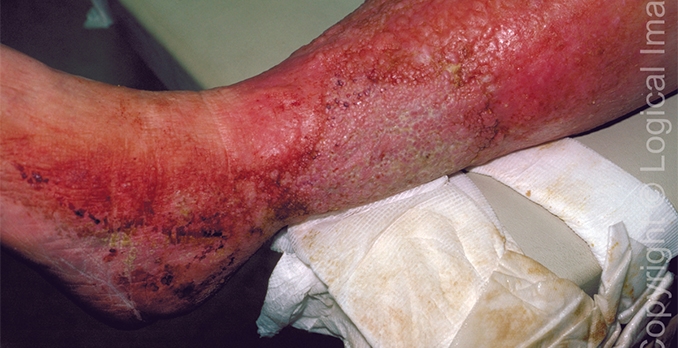The correct diagnosis is stasis dermatitis, a cutaneous vascular disease of venous insufficiency that results in acute dermatitis and a pigmentation change in the lower legs. It usually begins on the medial malleolus, but may become circumferential over time.

In addition to erythematous, scaly plaques on the lower leg, chronic cases may produce red and yellow mottling and brown patches of pigmentation that can be accompanied by an eczematous dermatitis as venous return shunts into the superficial vessels. There may be edema, varicosities, and atrophic plaques.
Associated conditions include obesity, congestive heart failure, deep vein thrombosis, and chronic venous insufficiency. Complications include infection and ulceration. Incidence of stasis dermatitis increases with advancing age. It is noteworthy that stasis dermatitis is often mistaken for cellulitis. Unlike cellulitis, however, the lesions of stasis dermatitis are often scaly and present bilaterally.
The area should be treated with mid- to high-potency topical corticosteroids, applied twice daily. Open excoriations or erosions may be treated with a topical antibiotic to prevent infection. Compressive leg stockings (20 mmHg to 30 mmHg, fitted to the patient) are a necessary long-term measure. Legs should be elevated as much as possible.
Doppler ultrasonography to assess arterial flow is prudent in patients with risk factors for peripheral vascular disease prior to the institution of compression therapy.
Case presented by Manasi Kadam Ladrigan, MD. Image and text courtesy of Logical Images, Inc.
[taq_review]
